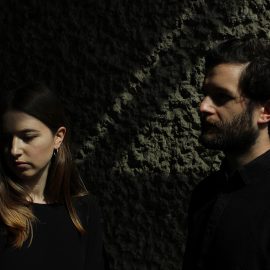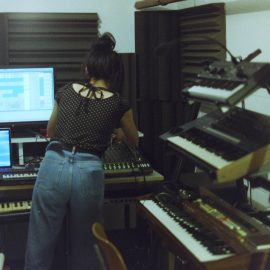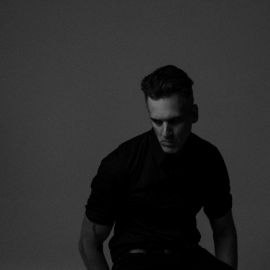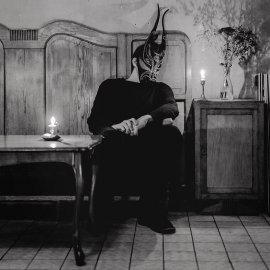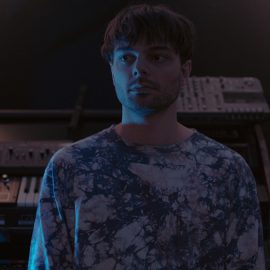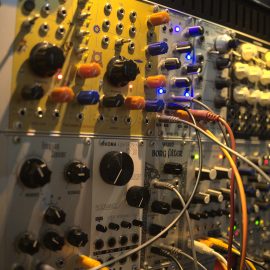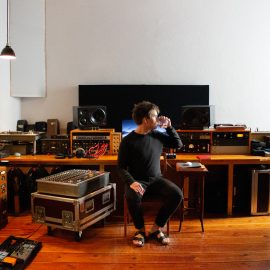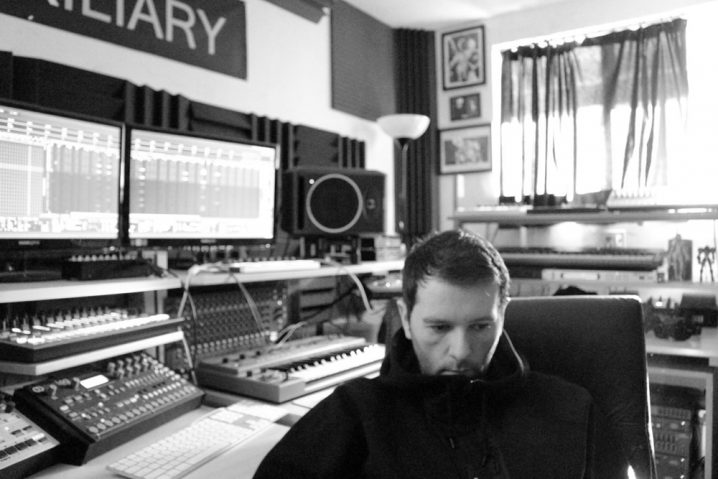
Let’s start at the very beginning. Can you tell us how you got involved in composing, and what was your very first piece of gear?
I was about 13-14 years old when I first got into writing music. I was in high school soaking up the hardcore/breakbeat/rave scene that was in full bloom, so this was about 1992/1993. As a young kid, there was a lot of fun and amazing music out there. The further I got away from mainstream music, the more amazed I got by what I was hearing. I’d go to indie record stores on the weekends with my friend, Chris. We’d spend whatever money we’d been given by our parents on starting a record collection. It was a really exciting time of my life that I remember fondly, and the more I got involved with music, the more I knew that I had to start producing my own tracks. Fortunately, I already had a few pieces of gear that would get me up and running.
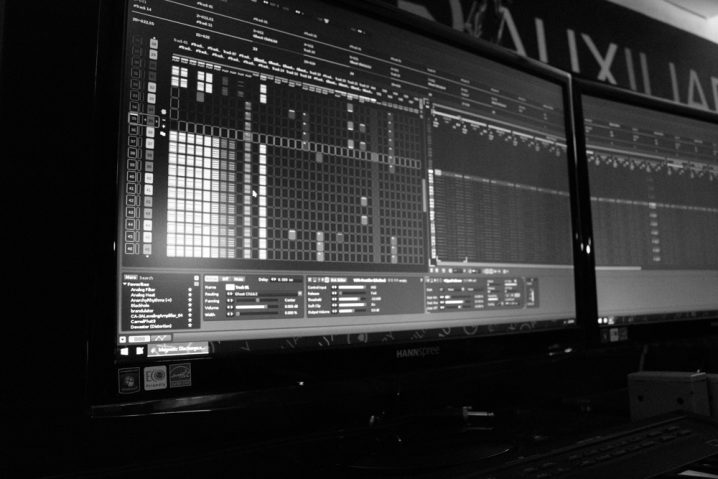
These first pieces were an Atari 1040 STE and a basic Casio keyboard with MIDI. I tried my hand at software like Cubase, Trax, Notator before realising I needed a sampler to write the music I was into at the time, due to the limitations of this keyboard and the price of buying myself a nice synthesizer. This obviously wasn’t really an option for a school kid with no income. Chris was very much into the idea of producing his own music too and introduced me to some freeware tracker software. He’d been putting tracks together by sampling using a plug-in cartridge for his Amiga 500 and a program called ProTracker. After a few initial lessons from Chris, I started to work it out for myself using the Atari equivalent, which was NoiseTracker. I then realised I could start to put music together the way I wanted to using the Atari and the cheap sampler. Thinking back I’m sure both of these trackers only had 4 channels available and had no effects built in. Very rudimentary creation tools for the time, but it was enough to get me hooked and plant the seed.
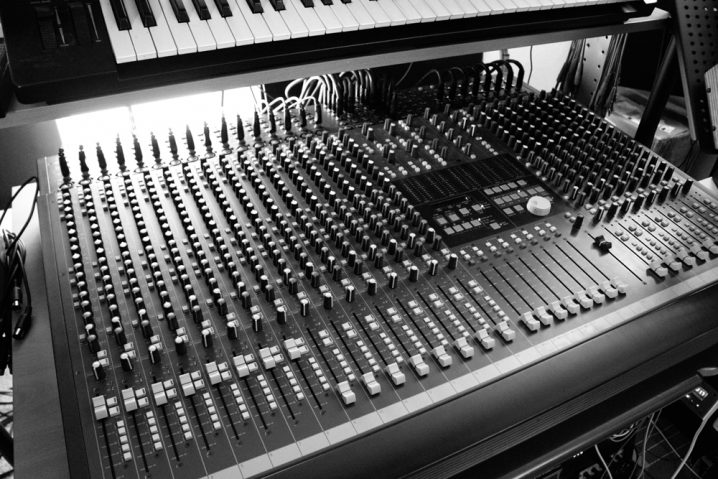
How many different studio iterations have you gone through, and what does your final setup look like right now?
Including my initial crude Atari setup, it’s changed and been added to year by year. I was pretty much all ‘in the box’ up until around about 2006. It’s also hard to say what my final setup looks like too, as my studio is constantly being changed, refined, moved, etc. I feel I finally have a good space which is acoustically treated, so the layout of it won’t change much these days, but the content might. The core of my studio probably will stay the same though. I’m using a PC with an i7 6700K (4.00Ghz) and 16gb DDR4 ram, which is fast enough for what I need. I only recently upgraded this PC, within the last few years actually, as I was making do with an outdated 1st generation i7 chip for a while, until it finally became a bit too slow for everyday use. A few other staples are the Focal CMS 65 and Sub setup, along with two RME HDSP Multiface audio interfaces, that connect to a Soundcraft Ghost 24 channel mixing desk and a Crane Song HEDD.
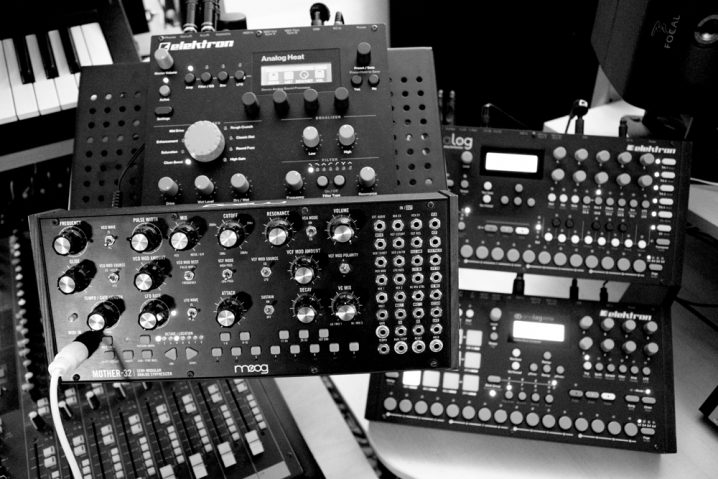
Tell us about your favorite piece of hardware.
Every piece of gear I’ve bought has probably been a favorite at some point in time. Actually, perhaps not every piece… Right now, I’ve been really enjoying the Yamaha CS10, which Ena (Horo) was kind enough to ship to me from Tokyo for a fantastic deal. A few other favourites are my Yamaha DX200, Korg Wavestation A/D, Yamaha TG33 and Roland SH-101. There’s a lot of gear in here though, so it’s hard to narrow it down. I’ve also got a Yamaha SY22, which has seen better days, but I love it. It’s kind of redundant to own that and the TG33, as they are essentially the same synth, other than a few upgrades that the TG33 has. I picked this up for $60 on Craigslist many years ago, mainly due to the price and the fact I love my TG33. These all come to mind though, as I’ve been using them a lot for recent ambient projects. I recently got a DSI Pro 2, which has become one of my favourite synths ever. Instant inspiration every time I switch it on. Amazing!
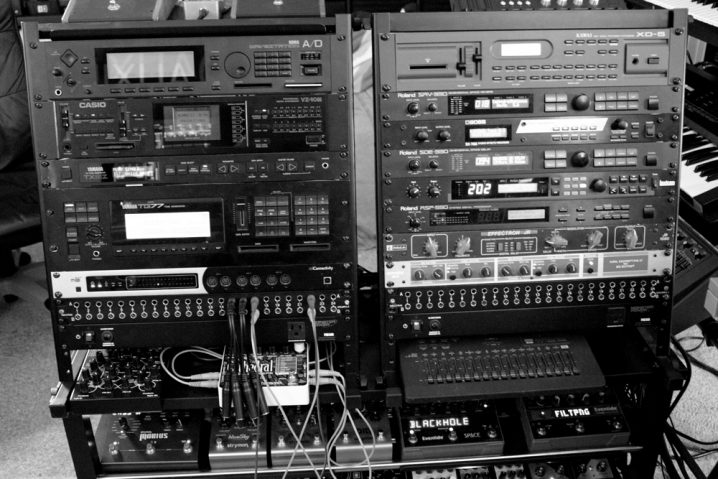
And what about the software that you use for production?
I’ve been using a program called Renoise since around about 2002. I think it was version 1.2 or so that I started to use after becoming unsatisfied with Cubase and the PC version of Logic at the time. It’s obviously not because they were bad programs, but the tracker workflow had become second nature for me after working that way for so long. When Renoise came out, it gave me all the advantages of programs like Cubase but allowed me to retain the way of working I was so used to. I’ve stuck with that ever since. I also use Cockos Reaper, which I link to Renoise using Rewire, as I can sync up video for film scores and projects that rely on timecode.

Is there a particular piece of gear that you’re just dying to get your hands on and do you think one day you’ll have it?
I used to lust after gear, especially rarities and high ticket items, but these days I’m really not as bothered. I can more than make do with everything I’ve got, plus it’s more about how the sounds are processed for me. Buying a vintage synth for $3-4k doesn’t make much sense to me these days, as it will essentially sound very similar to something else much cheaper, due to the processing I like to do to achieve my sounds. I think this is in part why I never took the plunge into modular synthesis. I’m sure I’d enjoy it a lot and get a lot of use from it, but it’s just not a wise investment of money for me right now, with my studio setup the way it is currently. Of course, the collector side of me throws all this common sense to one side every now and then and makes purchases! But in general, I try and keep it sensible and not too much of a financial drain anymore.

Can you please share some aspects of sound design in your work?
Renoise is a fantastic tool for sound design in general. Over the years, I’ve created many effects chains using the Renoise native DSP effects and some VST FX. I’ve amassed a large collection of these that I can use as starting points when creating tracks, or when I’m trying to achieve a specific sound. Often times, I’ll get surprised at the results some of these can render for me, and other times I won’t even remember how or when I created a chain. I got into DIY pedals for a bit, but haven’t made anything other than a stompbox with a custom piezo mic, which has 4 adjustable violin strings mounted on the box. Running things like this through other effects units and experimenting often creates fantastic results. Every now and then I’ll spend a good amount of time doing things like this and just leave the record button on. I had a broken Orban spring reverb for a while too, that created really weird artifacts. That was fantastic for getting really unexpected amazing soundscapes from. Sadly, it eventually died, but I like to use noise from things like that to create beds of texture.

Any particular new techniques that you tried out for your new album?
I’m constantly experimenting with device chains, doing things that you shouldn’t normally do, like placing a delay after a reverb in a wet signal. Usually, you’d want the reverb to effect what comes through the delay, but that’s just a specific example that springs to mind. I intentionally don’t write down or make too many notes of things that sound good together. I like this approach, as it means I’m not likely to rinse and repeat certain things. This is quite the opposite for VST/native DSP chains in Renoise, as I touched on in the previous question.
What does your live setup look like, and what do you bring with you when you travel for an extensive tour?
I don’t play live, exactly – more like a hybrid setup. I’ll play all of my own music via Traktor, using the NI Kontrol Z1 and X1 MkII, and then have 2 remix decks going, where I play stems of my tracks with the other decks using two Kontrol F1’s. It lends to a unique live experience for my music, without creating any panic and stress that might be caused by bringing more expensive studio equipment on the road with me.
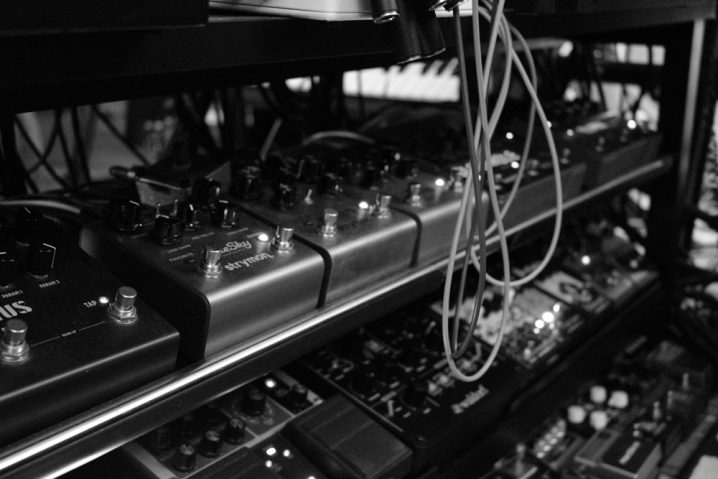
What is the most important environmental aspect of your current workspace and what would be a particular element that you would improve on?
Space and order. I have to clear everything, all desktops, the floor etc. from gear that’s laying about, including cables. I need that clean workspace before I sit down and create. It’s something I’ve been doing for a long time now, so it’s a habit I like to practice. I definitely tend to push things to the back of the queue and sometimes leave myself with a bigger workload than is necessary, so that’s something I could definitely improve on. My time management is something I’m usually good with in general, but it’s a bit haywire with music sometimes.
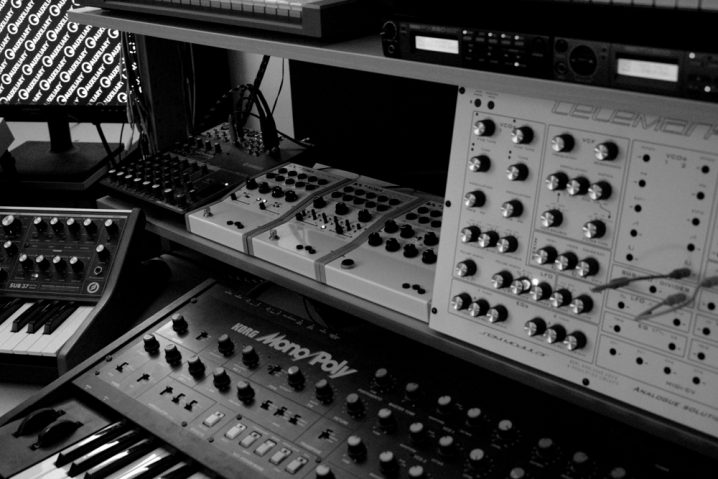
What can you tell us about your overall process of composition? How are the ideas born, where do they mature, and when do they finally see the light?
The process of creating isn’t always the same for me. I’ve never had a specific way of going about creating a piece of music. Sometimes I’ll start with percussion, sometimes with a pad. Other times I’ll just be messing with FX units and create something that becomes a starting point. As for how an idea is born, it’s really a mixture of inspiration and simply experimenting. Inspiration comes from so many sources for me, so I often find myself with ideas forming in my mind.
After the piece is complete, how do you audition the results? What are your reactions to hearing your music in a different context, setting, or a sound system?
I make music for myself, first and foremost, so my reactions always dictate whether or not a piece of music will eventually come out. If it’s still making me feel something after a month or two, then I’ll more likely consider it for a release, rather than something that I’ve gone off of, obviously. I usually listen back in the studio a lot, with and without the sub. Other place I’ll listen to would be on headphones when exercising, in the car, and on my hi-fi setup with standard speakers. Usually, I can hear if something needs changing or fixing in the mix on one of these ways of auditioning, so it’s a pretty reliable process for me. Hearing your music on a club PA is the ultimate test though, as if it doesn’t cut through there, then I feel like I never reached the potential that the track may have once held.
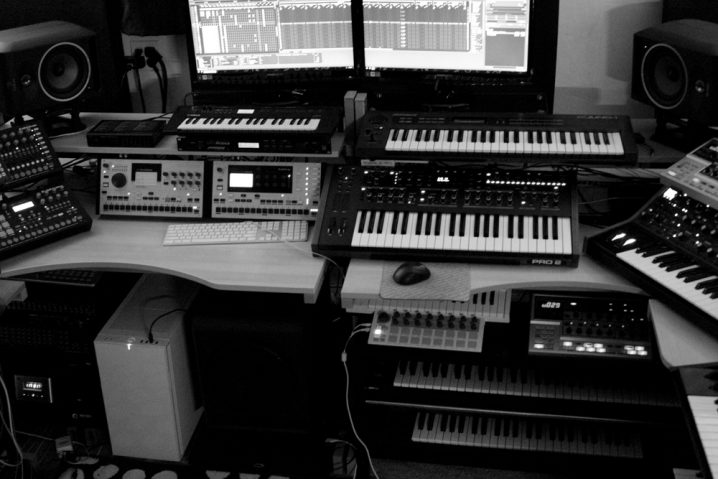
Do you ever procrastinate? If so, what do you usually find yourself doing during those times?
Often! It’s not so bad usually, but I can definitely let it interrupt work at times. If (or when) it happens, I’ll take a break from what I’m doing, then try come back to it refreshed at a later time. Sometimes it might be an hour later, sometimes it might be a week later. I usually don’t let it stress me too much if it happens. My attention span can dwindle quickly when I have a lot of projects on the go and I find I work better by not taking on too many things at once, so I can devote my full attention to where it’s needed at the time.
What gets you inspired?
Lots of things, but mainly sci-fi movies, video games and related themes in other forms of art. I think I’ve been eternally writing music that I’d love to see accompany visuals for some futuristic science fiction film or game. That’s usually my headspace.
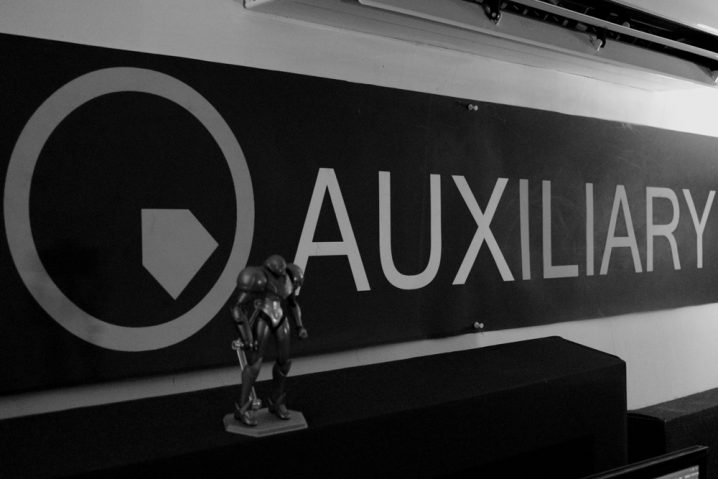
And finally, what are your thoughts on the state of “electronic music” today?
I think it’s in a healthy state. There are a lot of fantastic musicians putting out some incredible music across many different genres. Lots of healthy little scenes all around the world, which in turn have spawned some amazing record labels too.
